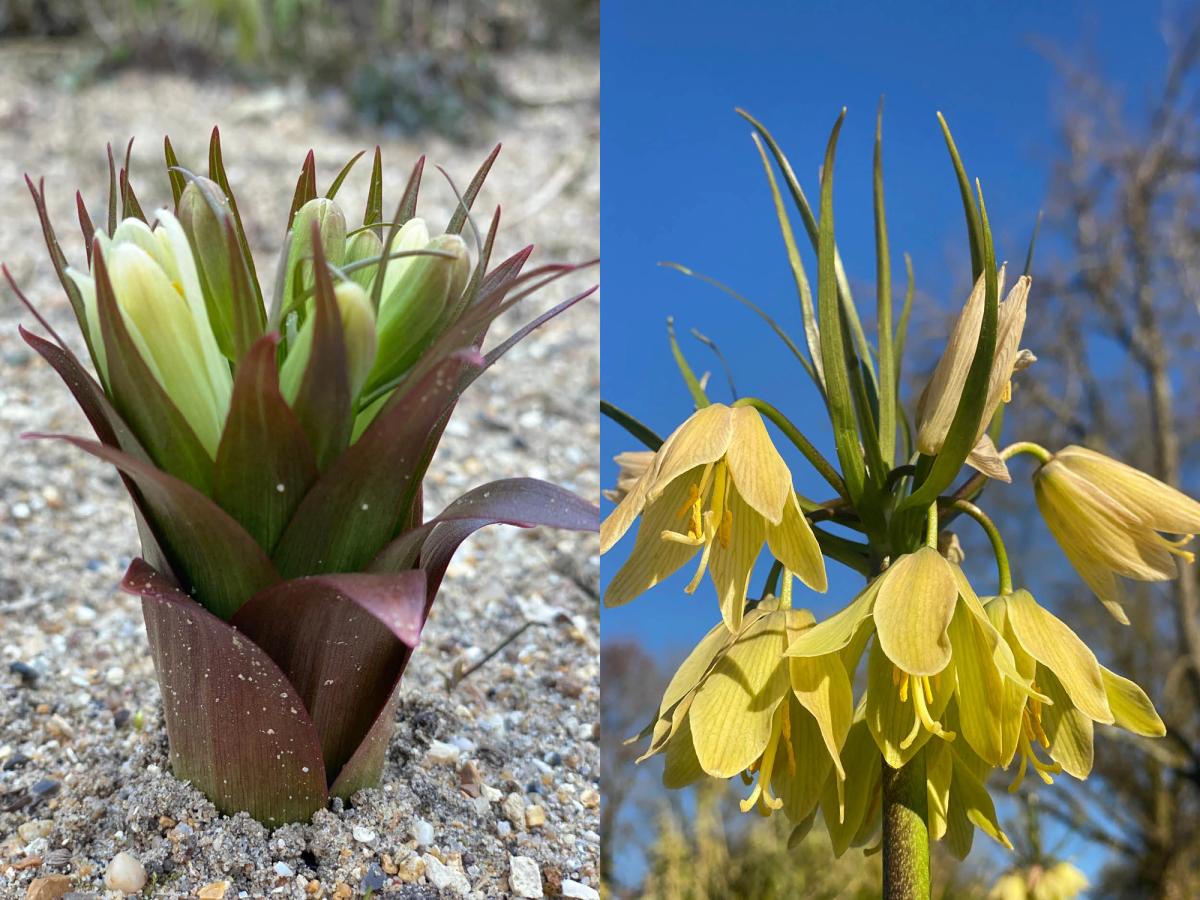
The bulbs of the Plant Library have been generously giving us a good show and welcome to Spring.
The Iris reticulata have been really strong this year and began flowering in early February and are just beginning to fade now. Two new species of Frittilaria are now in full flower.
We are in the process of increasing the range of Fritillaria we grow here. Two new additions we planted last autumn are Fritillaria raddeana and Fritillaria sewerzowii, both bought from John Amand.
Fritillaria raddeana is native to Iran, Turkmenistan and the Western Himalayas. Native to rocky areas at altitudes of 900 – 1800 meters but also seen in lowlands. It enjoys sharp drainage and a sunny position. It grows well here in our sunny sand beds.
Resembling Fritillaria imperialis (crown imperial), but shorter, it is sometimes referred to as the dwarf crown imperial. First collected in 1886 by Dr Gustav Radde.
We plant these out in autumn and they flower from late February through to mid March (pictured right).
Fritillaria raddeana looks pretty extraordinary when foliage first appears in early March (pictured left).
Fritillaria sewerzowii
Found in scrubs, scree mountain slopes and lightly wooded areas of temperate Asia, Uzbekistan and Kyrgyzstan at altitudes between 1000m-3000m.
Grows well in our sand here and enjoys a full sun position. Our first year of growing here and seems to be a strong specimen. Grows to about 30 cm tall and has unusual glaucus foliage with rusty brown efflorescence.
Named by the German botanist Eduard August von Regel in 1868.
Iris reticulata
Two varieties that amongst others 17 cultivars that we grow are Iris reticulata ‘Kathrine Hodkin’ and ‘Harmony’ both have been particularly beautiful this year.
The reticulata group of irises is characterised by a fibrous net surrounding the bulb. Hence 'reticulata' meaning netted or net like in Latin.
Its native range is central Turkey east to Caucasus, central Iran and Iraq, usually near the snow-line at up to 3000M or in open fields and hills at lower altitudes.
They can be found growing in the Hyrcanian woods, along the southern coast of the Caspian Sea from Azerbaijan to Iran.
They enjoy a sunny position with sharp drainage as the bulbs need to dry out in the summer, they prefer to be dry throughout the autumn and winter too.
In the spring they prefer moisture whilst they are flowering.
Plant between September and Mid November and enjoy their flower from mid Feb to mid March.